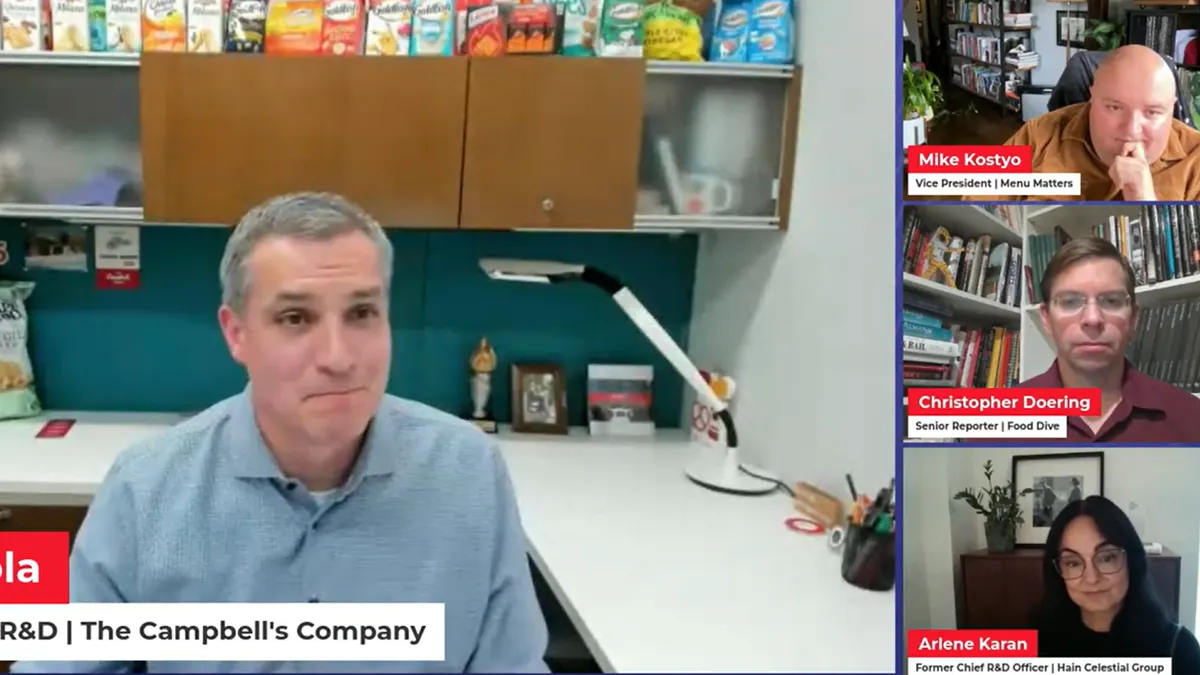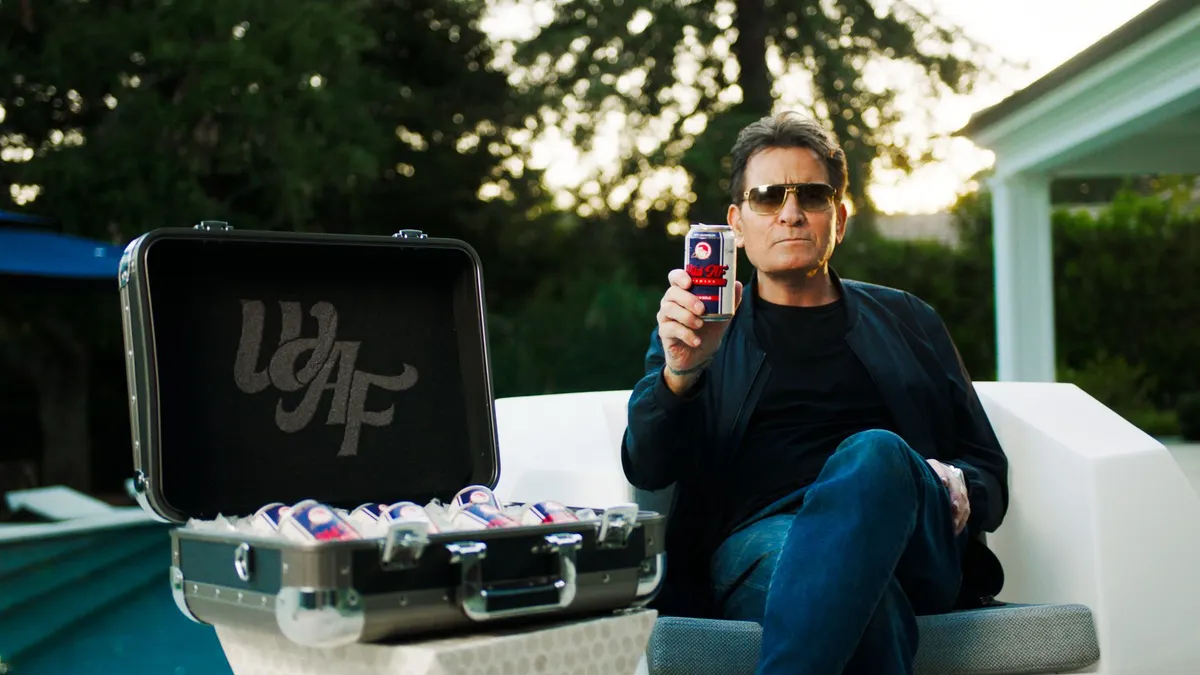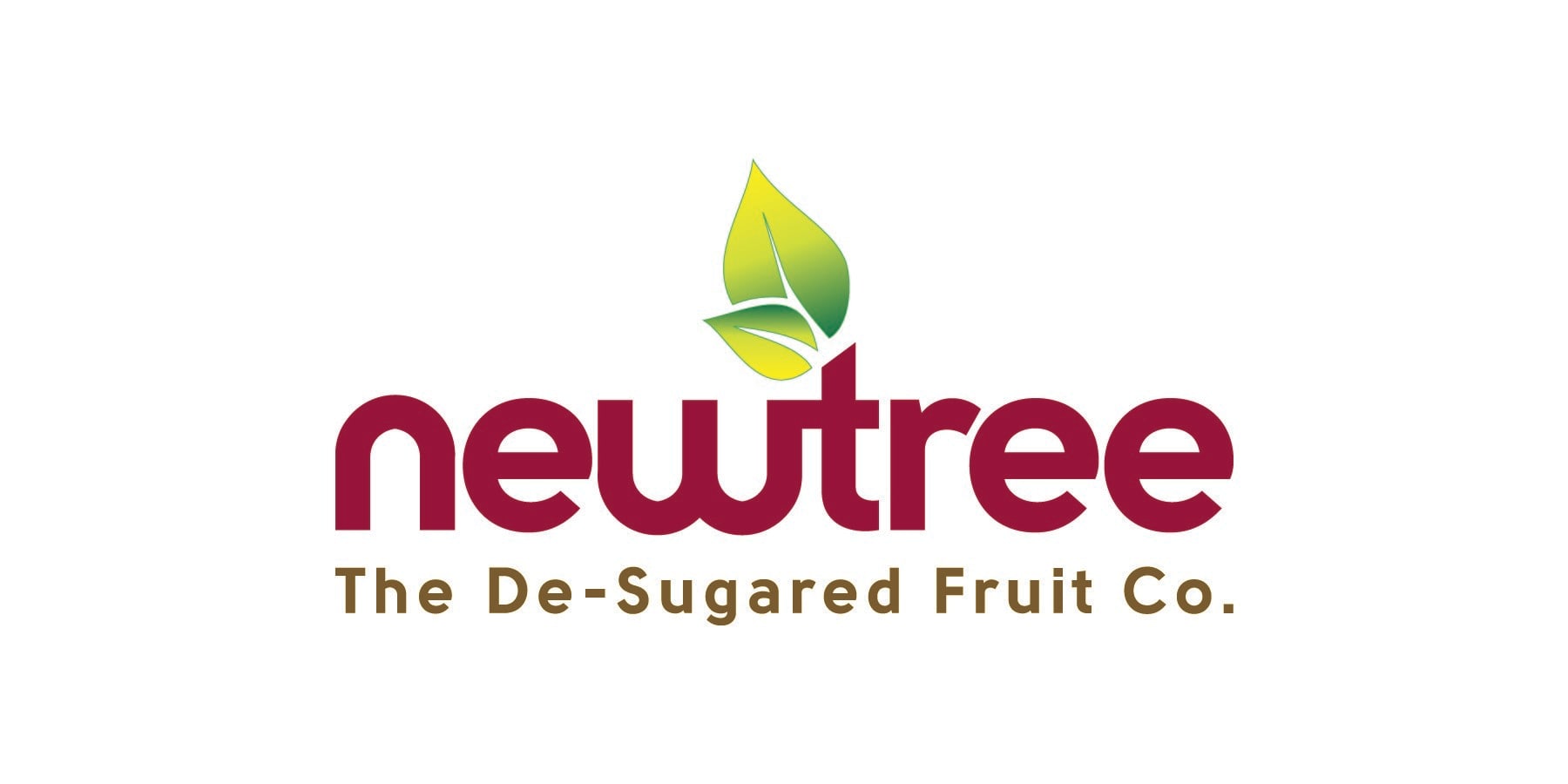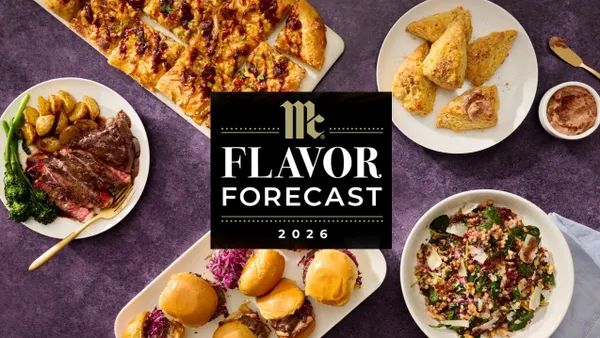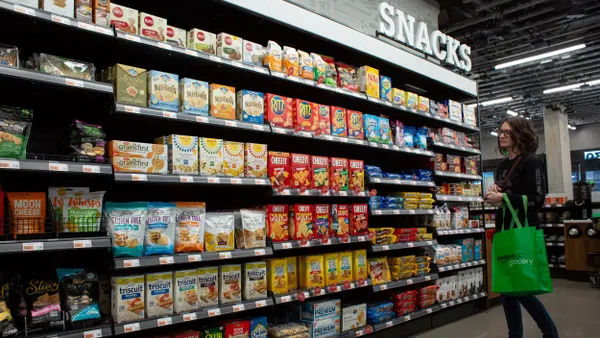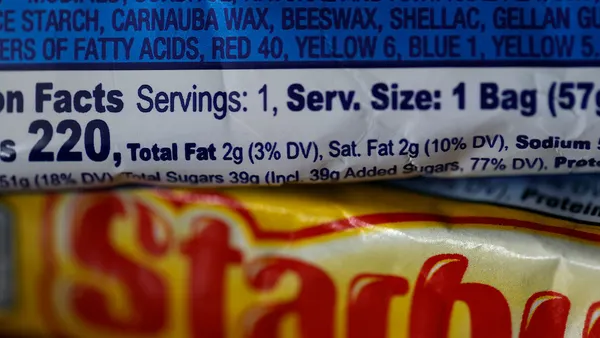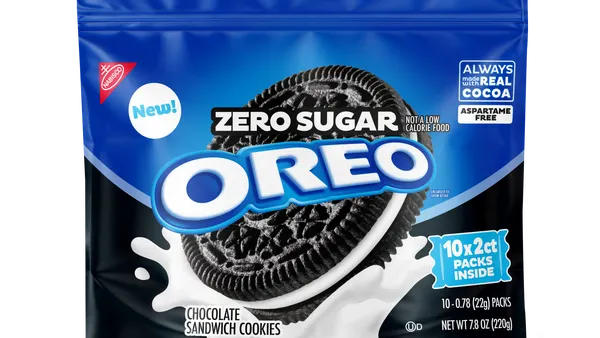Editor’s note: This story highlights takeaways from an Oct. 15 event hosted by Food Dive and Packaging Dive. Register here to watch the replay on demand.
Social media and rising at-home consumption are placing new pressure on food companies to innovate faster than ever before.
Traditionally, food innovation was the domain of restaurants where chefs would dazzle consumers with unexpected flavors or ingredients. But with close to 40% of Americans saying they're dining out less often, consumers are moving from menus to grocery aisles for inspiration.
This is creating new opportunities — and challenges — for major food companies, executives and experts said during The Future of Food & Packaging Innovation, a virtual event hosted by Food Dive and Packaging Dive earlier this month.
Grocery shelves are overflowing with innovative new products that draw from flavors across cuisines or focus on certain trendy ingredients, like pickles or hot honey. Consumers now have a plethora of options to choose from to bring the restaurant experience home.
"A couple of years ago, we saw for the first time that consumers said that they were innovating more at home and in their home kitchen," said Mike Kyosto, vice president of consulting firm Menu Matters. "You see so much more innovation at CPG in the supermarket, you see the frozen food aisle with global products that you never saw previously."
For companies, that means the pressure is rising to launch new products that can stand out among the competition.
"We've just got to be a lot faster," said George Vindiola, head of enterprise research & development at The Campbell's Company. He added that the pace of innovation is among the biggest changes he's seen throughout almost 30 years in the food industry.
Companies have to keep up with social trends, dietary preferences and changing demographics, otherwise they could "miss some of the business opportunities" in today's fast-paced environment, Vindiola said.
There's also a limited time to act. Social media has significantly shortened the lifespan of ingredient trends, with TikToks wearing consumers out on flavors such as Dubai chocolate after just six to eight months, Kyosto said.
The shortened timeline has forced many companies to confront whether they want to chase after every new trend, or instead focus their innovation efforts on fewer, bolder bets. At Campbell's, for example, the company is relying less on limited flavors and collaborations for its Goldfish brand as it doubles down on larger "platform innovation," according to Vindiola.
"At some point, you can only do so many flavors, so many LTO, so many cool co-branding opportunities," he said. "It takes investment, both in marketing and equipment, new ingredients, whatever those things are. And we feel like it's worth it. If we're going to grow in this space, you do have to go in with that level of investment."
However, it can be risky to focus all efforts on just one innovation strategy, particularly for smaller companies, said Arlene Karan, former chief research and development officer for Hain Celestial. This is especially risky as nearly 30,000 new products are introduced each year, with 95% of them failing, per research from Harvard Business School.
Launching a new product is like raising a child, Karan said, and it requires sustained investment and attention "to get them out of diapers and all the way through school to make sure that they continue to grow in a healthy way."
The amount of investment and risk involved has pushed Hain to think about its approach more broadly, investing in a couple of large, bold innovations that are supported by "smaller bets."
"Overall, [we want to be] growing the trajectory of innovation, versus putting all of your bets into that one spot just because the risk profile is high on innovation," she said.


